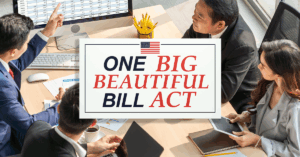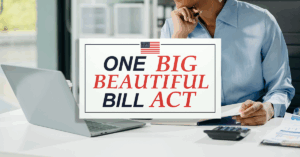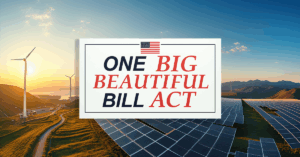On June 5, 2020, President Trump has signed the PPP Flexibility Act (“PPPFA” or the “Act”) after unanimous approval of the Senate on June 3, 2020. Numerous changes are applied to the PPP Forgiveness Stipulations, which are expected to ease requirements and support the entire forgiveness of loan amounts.
Note: This article is written in consideration of the details obtained as of June 5, 2020. Readers are advised to consider new developments subsequent to the date of the article. We will update information as it becomes available.
Salient modifications in the PPP forgiveness from the original CARES Act states increased in the duration for small businesses and other PPP loan recipients to spend the funds and still qualify for forgiveness of the loans by threefold. The Act also allows recipients to utilize loan proceeds up to 40% for other qualified costs, as opposed to 25%.
The Act passed in a rare display of bipartisanship, and a unanimous voice in the Senate hours after Wisconsin Senator Ron Johnson initially blocked the Act. Johnson dropped the objections after Senate Leader Mitch McConnell agreed to add a letter to the Congressional Record clarifying that June 30, 2020, is retained to be the deadline for application of PPP loans.
KEY CHANGES
Following are the changes in the PPP Flexibility Act in comparison with the original provisions in the CARES Act:
-
Extension of Period of Disbursement. The extension is designed to allow greater leeway for borrowers to obtain entire loan forgiveness for the amount originally received.
-
Current PPP Borrowers – the current borrowers prior to the date of enaction of the amendment have the discretion to choose between disbursement period of 8 weeks (original) or 24 weeks (amendment).
-
New PPP Borrowers – following approval of the revisions, all new PPP Borrowers have up to 24 weeks or December 31, 2020 (whichever is earlier) to spend the funds that would apply forgiveness.
-
-
Change in Payroll Expenditure Requirement. The current amendment is intended to “remain as a sliding scale in terms of forgiveness,” as co-sponsor Chip Roy coined. From the 75% requirement to disburse proceeds to Payroll-related expenses, the requirement is now at 60%. However, the requirement to meet the Payroll appropriation is now a cliff, meaning that the entire loan proceeds will not be forgiven if the 60% requirement for Payroll costs is not met.
-
Extension of Period to Restore Workforce. PPP Borrowers previously had until June 30, 2020 to restore their workforce should they succumb to lay-off and workforce reduction, in order to qualify for entire forgiveness of the loan. Now, the Act provides an extension of workforce restoration to pre-pandemic levels (defined as on or before February 15, 2020) until December 31, 2020.
-
Exceptions to Workforce Restoration. Previously, the only allowed reason for not restoring the workforce level to pre-pandemic levels is if employees turned down good-faith offers to be rehired at the same hours and wages as before the pandemic. Now, the Act introduces 2 new reasons for exceptions to total workforce restoration, as follows: 1) if the Company exhausted efforts to hire but cannot find qualified employees; or 2) the Company was unable to restore business operations to pre-pandemic level due to COVID-19 related restrictions in the specific jurisdictions.
-
Deferral of PPP Loan Payment. Previously, the loan payment is only deferred for 6 months from the date of the approval/disbursement. In the new Act, the payment commences once there is approval and finalization of the amount for the forgiveness portion of the loan, which may extend for more than 6 months. Borrowers have up to 10 months after the end of the covered period to apply for forgiveness, after which, payment will be required.
-
Extension of the Loan Term. Previously, all lenders and borrowers are set in the 2-year requirement at a 1% interest rate for all the PPP Loans. Under the new Act, lenders and borrowers may mutually agree for the loan term, up to 5-years, for the unforgiven portion of the PPP loan. Interest is still at 1%.
-
Deferral of Payroll Taxes Payment. Previously, the CARES Act specifically states that borrowers cannot delay payment of payroll taxes. Under the new Act, borrowers of PPP Loan are now allowed to defer 2020 payroll taxes to the end of 2021 and 2022.
WE’D LOVE TO HELP.
We will continuously update you with news and analysis of legislative and administrative acts that are designed to provide relief from the economic effects of the COVID-19 pandemic. For immediate questions, guidance and clarification, please contact us at [email protected] or discuss it with your Scrubbed professional.
Disclaimer
The information contained herein is of a general nature and is not intended to address the circumstances of any particular individual or entity. It is not intended to be relied upon as accounting*, tax, or other professional services. Please refer to your advisors for specific advice. Although we endeavor to provide accurate and timely information, there can be no guarantee that such information is accurate as of the date it is received or that it will continue to be accurate in the future. No one should act upon such information without appropriate professional advice after a thorough examination of the particular situation.




